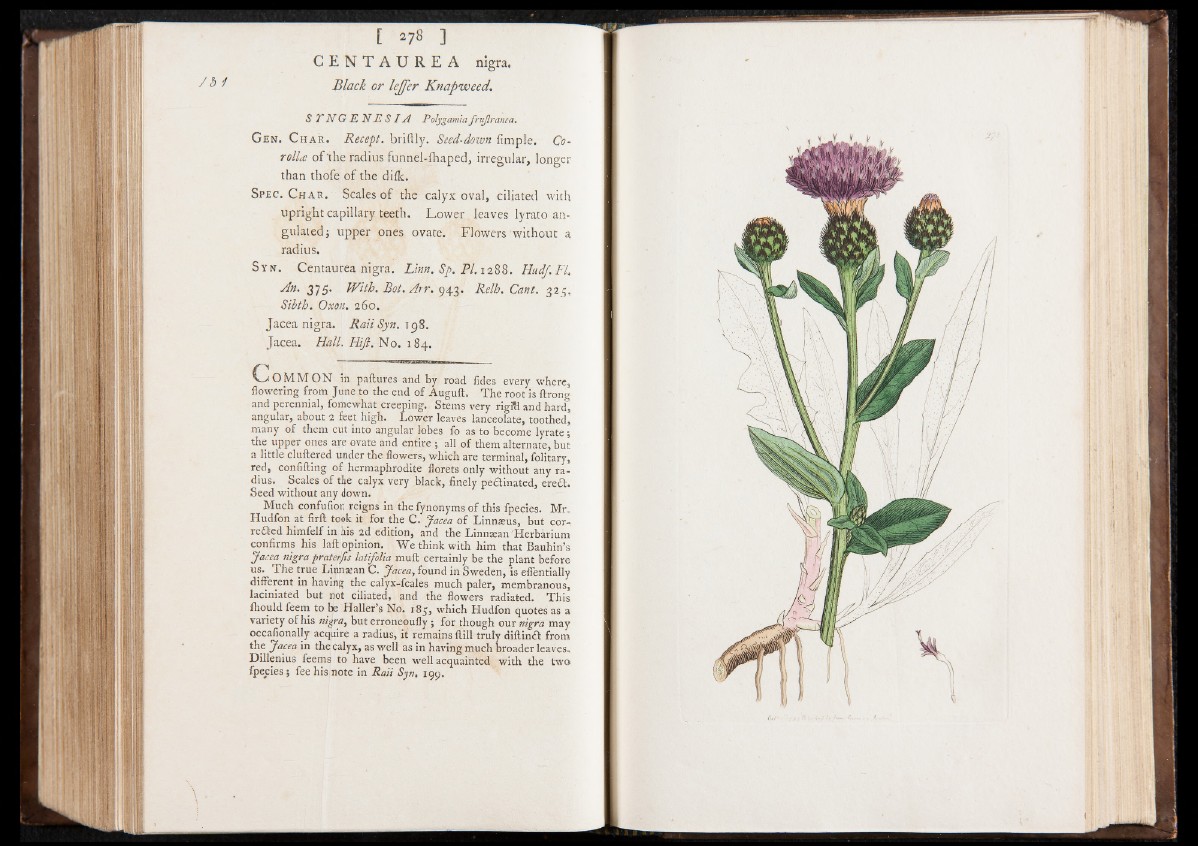
J b 1
C E N T A U R E A nigra,
Black or lejfer Knapweed.
S T N G E N E S IA Polygamiafritflranea,
G en. C har. Recept. briftly. Seed-down fimple. Corolla;
of "the radius funnel-lhaped, irregular, longer
than thofe of the diflc.
Spec. Char. Scales of the calyx oval, ciliated with
upright capillary teeth. Lower leaves lyrato an-
gulatedj upper ones ovate. Flowers without a
radius.
Syn. Centaurea nigra. Linn. Sp. PL 1288. Had/. FI,
An. 3 7 5. With. Bot.Arr. 943. Relb. Cant. 325,
Sihth. Oxon. 260.
Jacea nigra. Rail Syn. 198.
Jacea. Hall. Hift. No. 184.
C o m m o n in paftures and by road tides every where,
flowering from June to the end of Auguft. The root is ftrong
and perennial, fomewhat creeping. Stems very rigi*d and hard,
angular, about 2 feet high. Lower leaves lanceolate, toothed,
many of them cut into angular lobes fo as to become lyrate ;
the upper ones are ovate and entire ; all of them alternate, but
a little cluftered under the flowers, which are terminal, folitary,
red, confifting of hermaphrodite florets only without any radius.
Scales of the calyx very black, finely pectinated, erect.
Seed without any down.
Much confufion reigns in the fynonyms of this fpecies. Mr.
Hudfon at firft took it for the C. J,acea of Linnaeus, but corrected
himfelf in his 2d edition, and the Linntean Herbarium
confirms his laft opinion. We think with him that Bauhin’s
Jacea nigra pratettfis latifolia mult certainly be the plant before
us. The true Linnaean C. Jacea, found in Sweden, is eflentially
different in having the calyx-fcales much paler, membranous,
laciniated but not ciliated, and the flowers radiated. This
fhould feem to be Haller’s No. 185, which Hudfon quotes as a
variety of his nigra, but erroneoufly ; for though our nigra may
occafionally acquire a radius, it remains Hill truly diftinft from
the Jacea in the calyx, as well as in having much broader leaves.
Dillenius feems to have been well acquainted with the two
fpecies; fee his note in Raii Syn, 199.
\